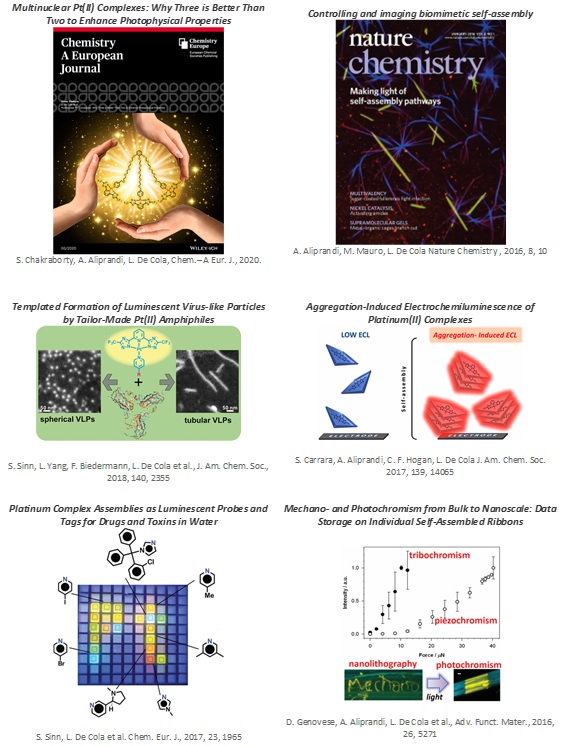Self-assembly of luminescent Pt(II) complexes
Luminescent amphiphilic molecules undergoing self-assembly are of great interest for the development of new materials, sensors or bio-labels. In the last years, our group has reported soft structures formed by metal complexes able to aggregate in fibres, gels and mechanochromic materials. In particular square-planar platinum(II) complexes exhibit extraordinary photoluminescence properties upon self-assembly.
An appropriate design of the complex allows tuning both the emission properties and the morphology of the assemblies, and even small changes in molecular design can completely inhibit or enhance the formation of organized supramolecular architectures. For example, recently we have demonstrated that the photoluminescence which characterizes the aggregates is already generated upon the formation of dimers but that trimers present remarkably better emissive properties. Our investigations led to novel materials with unique properties and great potential for applications. For instance, the monitoring of the different emission properties, used as fingerprints for each of the assembled species, allowed an unprecedented real-time visualization of the evolving self-assemblies. Moreover, we have reported assemblies employed as very sensitive labels for the detection of toxins and drugs, and as a new class of emitters for electrochemiluminescence applications.
Furthermore, the combination of different Pt(II) compounds has allowed us to form hierarchically assembled structures whose formation is triggered by the media composition. Also, by the combination of Pt self-assembled moieties with biomimetic structures we have shown the applicability of these compounds in the modeling and study of biological and biomimetic systems.
Our future aims in this sense are to keep studying the interaction of different Pt complexes with biomolecules and biological systems, current projects include the co-assembly of Pt structures with DNA and its analogous structures and the study of the distribution of some of these compounds in biological models of interest such as hydra sp. In other direction, self-assembled Pt luminescent structures are unidimensional highly ordered materials, as they present a strong interaction with light its optomagnetic properties are of great interest, particularly, we seek to generate surfaces functionalized with chiral 1D nanostructured materials to be studied by means of its magneto-chiral dichroism.

